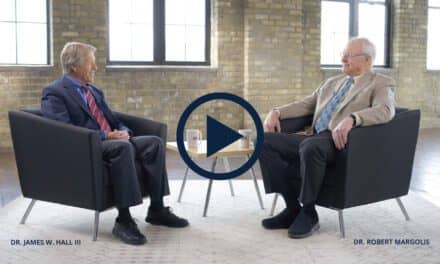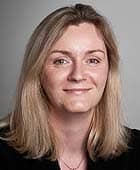An article published in the July 7 edition of the International Journal of Audiology reports on a new smartphone app designed to make it easier and cheaper to screen people, including young children and the elderly, for hearing loss. The project was led by Prof De Wet Swanepoel, PhD, from the University of Pretoria (UP), South Africa, in partnership with colleagues at UP and in Australia. (Dr Swanepoel contributed an article to The Hearing Review regarding remote screening in a special edition about teleaudiology in October 2012 guest-edited by Jerry Northern, PhD.)

De Wet Swanepoel, PhD, testing a 4-year-old with hearScreen, a smart phone app. Photo credit: University of Pretoria.
Data from the World Health Organization (WHO) shows that more than 5% of all the people in the world (about 360 million) suffer from permanent disabling hearing loss, and more than 32 million of these are children. In developing areas, up to 80% of people with hearing loss have no prospect of early detection.
“Hearing is the cornerstone for developing language, for learning to speak and to communicate,” says Dr Swanepoel, an audiologist at the Department of Speech-Language Pathology and Audiology at the University of Pretoria. “Even minor hearing defects can have a major impact on language development and the academic performance of children, because they simply get lost within the noisy environs of a classroom.”
With the introduction of a new South African health policy in 2012 that requires all Grade 1 learners —more than 1 million every year— to be screened for hearing loss, Dr Swanepoel saw the need to develop a mobile and easy-to-use hearing screening device that could replace the cumbersome and heavy apparatus that are currently used.
The newly developed app reportedly adheres to international calibration standards, can be loaded onto a low-cost, smartphone, is automated, and continuously monitors background noise to ensure reliable testing. A screening is said to take only 1 minute, and the data can be uploaded via the mobile phone network to a centralized site for evaluation and recommendations.
“Anyone who knows how to operate a mobile phone can set up the ‘hearScreen’ device,” says Swanepoel, who is also an executive board member of the International Society of Audiology (ISA). “It significantly improves and alters current models of school and community-based identification of hearing loss.”
“Africa needs cost-effective and sustainable methods with which to identify hearing loss in young children,” he adds. “Mobile health technologies such as this app are becoming more and more important in taking healthcare to the people who would otherwise not have access to hearing screening.”
Several field trials are currently underway in schools and primary health care settings. Findings reportedly demonstrate screening outcomes equivalent to the current gold standard. The user-friendly interface and affordability is said to open up new models for early access to hearing loss detection within underserved communities.
Source: ScienceDaily.com and University of Pretoria





